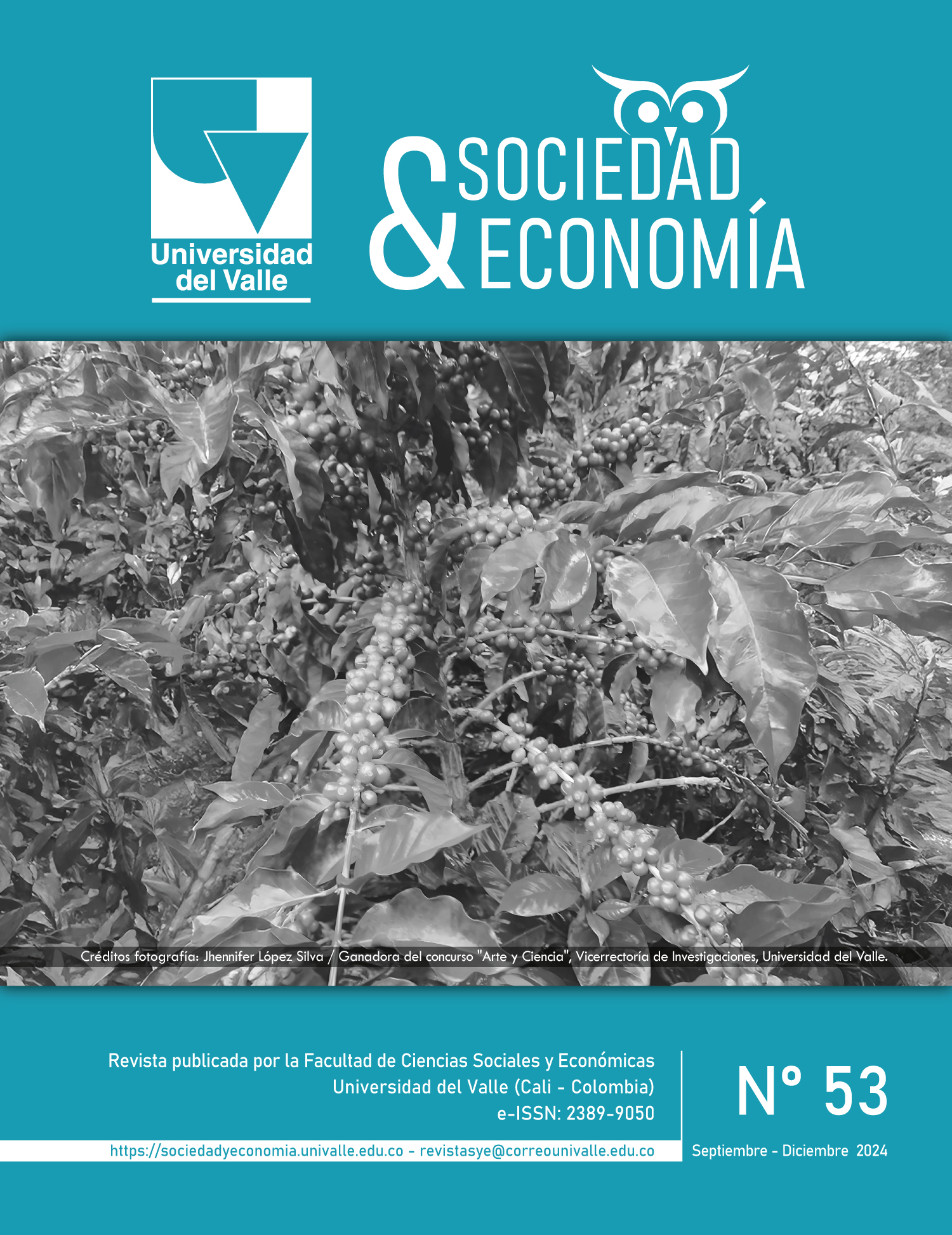Tenant Households and Housing-Induced Poverty in Argentina
Keywords:
rental housing, poverty, right to housing, social inequality, housing needs, housing finance, housing tenure, household budgets, family size, economic dependency ratioMain Article Content
Introduction
In Argentina, nearly half of tenant households allocate more than 30% of their income to housing-related expenses. However, this measure does not account for the cost of other equally essential needs.
Objective
To estimate the extent of the rental housing affordability crisis in Argentina during 2017-2018 using a residual income approach, taking the poverty line as a reference.
Methodology
Using data from the 2017–2018 National Household Expenditure Survey and the poverty line, percentages of tenant households experiencing housing-induced poverty are estimated based on various sociodemographic characteristics and compared to those obtained using the 30% threshold. Subsequently, multivariate logistic regression analyses are conducted to identify which of these characteristics are associated with a higher probability of experiencing financial overburden from a residual income perspective.
Results
The percentages of households with housing-induced poverty are similar to those estimated using the 30% threshold but show a significantly different distribution according to the sociodemographic composition of households. Tenant households with greater economic dependency, mainly those with children, and/or headed by young individuals, with low education attainment and in low-skilled jobs, are more likely to face affordability problems.
Conclusions
A residual income approach enables a more accurate analysis of the constraints faced by tenant households by highlighting poverty resulting from housing cost burdens, especially due to high rental costs.
Airgood-Obrycki, W., Hermann, A. y Wedeen, S. (2022). “The rent eats first”: Rent-al housing unaffordability in the United States. Housing Policy Debate, 33(6), 1272-1292. http://doi.org/10.1080/10511482.2021.2020866
Albina, I., Laguinge, L., Gasparini, L., Tornarolli, T., Cruces, G. y Afonso, S. (2024). Ajustando la imagen de la distribución del ingreso en Argentina: encuestas y re-gistros administrativos (Documento de trabajo nº 336). CEDLAS-UNLP. https://www.cedlas.econo.unlp.edu.ar/wp/wp-content/uploads/doc_cedlas336.pdf
Ballesteros, M. S. (2018). Promedio de los efectos marginales e interacciones en las regresiones logísticas binarias. INCASI.
Borrett, A. y Hollowood, E. (2023). Why women are at the sharp end of the rental crisis. Financial Times. https://www.ft.com/content/9ba4dfb8-4f93-4ef4-a1bd-b24744b58bdd
Brunelli Giorgis, A. L. y Falú, A. M. (2019). El acceso a la vivienda en alquiler en Córdoba capital. Un análisis desde el derecho a la ciudad y la perspectiva de género. Hábitat y Sociedad, (12), 29-42. http://dx.doi.org/10.12795/HabitatySociedad.2019.i12.03
Centro de Estudios Económicos y Sociales Scalabrini Ortiz. (2016). Situación del mercado viviendas en Rosario. https://www.ceso.com.ar/sites/www.ceso.com.ar/files/situacion_del_mercado_inmobiliario_rosario.pdf
Consejo Nacional de Coordinación de Políticas Sociales. (2019). Las transicio-nes de la pobreza. https://www.argentina.gob.ar/sites/default/files/las_transiciones_de_la_pobreza_hc_10.19.pdf
Gabriel, M., Jacobs, K., Arthurson, K., Burke, T. y Yates, J. (2005). Conceptualis-ing and measuring the housing affordability problem. Australian Housing and Ur-ban Research Institute. https://www.ahuri.edu.au/sites/default/files/migration/documents/NRV3_Research_Paper_1.pdf
Galster, G. y Lee, K. O. (2021). Housing affordability: A framing, synthesis of re-search and policy, and future directions. International Journal of Urban Sciences, 25(sup1), 7-58. https://doi.org/10.1080/12265934.2020.1713864
Grady, B. (2019). Shelter poverty in Ohio: An alternative analysis of rental housing affordability. Housing Policy Debate, 29(6), 977-989. https://doi.org/10.1080/10511482.2019.1639065
Granero, G. (2019). Viviendas en conflicto. El despliegue de Airbnb en Buenos Aires. http://estudiosmetropolitanos.com.ar/wp-content/uploads/2019/07/Airbnb-en-Buenos-Aires.pdf
INDEC –Instituto Nacional de Estadísticas y Censos–. (2020a). Canasta básica alimentaria y canasta básica total. Preguntas frecuentes. https://www.indec.gob.ar/ftp/cuadros/sociedad/preguntas_frecuentes_cba_cbt.pdf
INDEC –Instituto Nacional de Estadísticas y Censos–. (2020b). Encuesta Nacio-nal de Gastos de los Hogares 2017-2018: Base de personas, hogares y réplicas (actualizada al 20/07/2020). https://www.indec.gob.ar/indec/web/Institucional-Indec-BasesDeDatos-4
INDEC –Instituto Nacional de Estadísticas y Censos–. (2020c). Encuesta Nacio-nal de Gastos de los Hogares 2017-2018: Manual de uso de la base de datos usuario. https://www.indec.gob.ar/ftp/cuadros/menusuperior/engho/engho2017_18_manual_uso_bases.pdf
INDEC –Instituto Nacional de Estadísticas y Censos–. (2020d). Encuesta Nacio-nal de Gastos de los Hogares 2017-2018: Metodología de imputación (Nota téc-nica nº 5). https://www.indec.gob.ar/ftp/cuadros/menusuperior/engho/engho2017_18_nota_tecnica_5.pdf
Kutty, N. (2005). A new measure of housing affordability: Estimates and analytical results. Housing Policy Debate, 16(1), 113-142. https://doi.org/10.1080/10511482.2005.9521536
Lee, Y., Kemp, P. y Reina, V. (2022). Drivers of housing (un)affordability in the advanced economies: A review and new evidence. Housing Studies, 37(10), 1739-1752. https://doi.org/10.1080/02673037.2022.2123623
Martin, R., Moore, J. y Schindler, S. (2016). Definiendo la desigualdad. ARQ, (93), 30-41. https://doi.org/10.4067/S0717-69962016000200005
Molinatti, F. (2023). Submercado de alquiler residencial en la Argentina: Una aproximación a la asequibilidad de la vivienda. Ciudad y Territorio. Estudios Te-rritoriales, 55(215), 139-160. https://doi.org/10.37230/CyTET.2023.215.8
OCDE –Organización para la Cooperación y el Desarrollo Económico–. (2021). Building for a better tomorrow: Policies to make housing more affordable. OCDE. http://oe.cd/affordable-housing-2021
Padley, M. y Marshall, L. (2018). Defining and measuring housing affordability using the Minimum Income Standard. Housing Studies, 34(8), 1307-1329. https://doi.org/10.1080/02673037.2018.1538447
Reese, E., Almansi, F., del Valle, J. y Juan, A. (2014). Políticas habitacionales y la regulación del alquiler en Argentina. En A. G. Blanco, V. Fretes Cibils y A. F. Mu-ñoz (Eds.), Busco casa en arriendo: Promover el alquiler tiene sentido (pp. 93-131). Banco Interamericano de Desarrollo. https://publications.iadb.org/publications/spanish/document/Busco-casa-en-arriendo-Promover-el-alquiler-tiene-sentido.pdf
Rodríguez, M. C., Rodríguez, M. F. y Zapata, M. C. (2015). La casa propia, un fe-nómeno en extinción. La “inquilinización” en la ciudad de Buenos Aires. Cuader-nos de Vivienda y Urbanismo, 8(15), 68-85. https://doi.org/10.11144/Javeriana.cvu8-15.cpfe
Stone, M. (1993). Shelter poverty: New ideas on housing affordability. Temple University Press.
Stone, M. (2006a). A housing affordability standard for the UK. Housing Studies, 21(4), 453-476. https://doi.org/10.1080/02673030600708886
Stone, M. (2006b). Housing affordability: One-third of a nation of shelter-poor. University of Massachusetts. https://scholarworks.umb.edu/communitystudies_faculty_pubs/5
Stone, M., Burke, T. y Ralston, L. (2011). The residual income approach to hous-ing affordability: The theory and the practice. Australian Housing and Urban Re-search Institute. https://scholarworks.umb.edu/communitystudies_faculty_pubs/4/
Tunstall, R., Bevan, M., Bradshaw, J., Croucher, K., Duffy, S., Hunter, C., Jones, A., Rugg, J., Wallace, A. y Wilcox, S. (2013). The link between housing and poverty: An evidence review. Joseph Rowntree Foundation. https://www.jrf.org.uk/housing/the-links-between-housing-and-poverty
Wetzstein, S. (2017). The global urban housing affordability crisis. Urban Studies, 54(14), 3159-3177. https://doi.org/10.1177/0042098017711649
Downloads

This work is licensed under a Creative Commons Attribution-NonCommercial 4.0 International License.
Revista sociedad y economía editada por la Facultad de Ciencias Sociales y Económicas de la Universidad del Valle se encuentra bajo una Licencia Internacional Creative Commons Atribución - No comercial 4.0
Basada en una obra en http://sociedadyeconomia.univalle.edu.co

